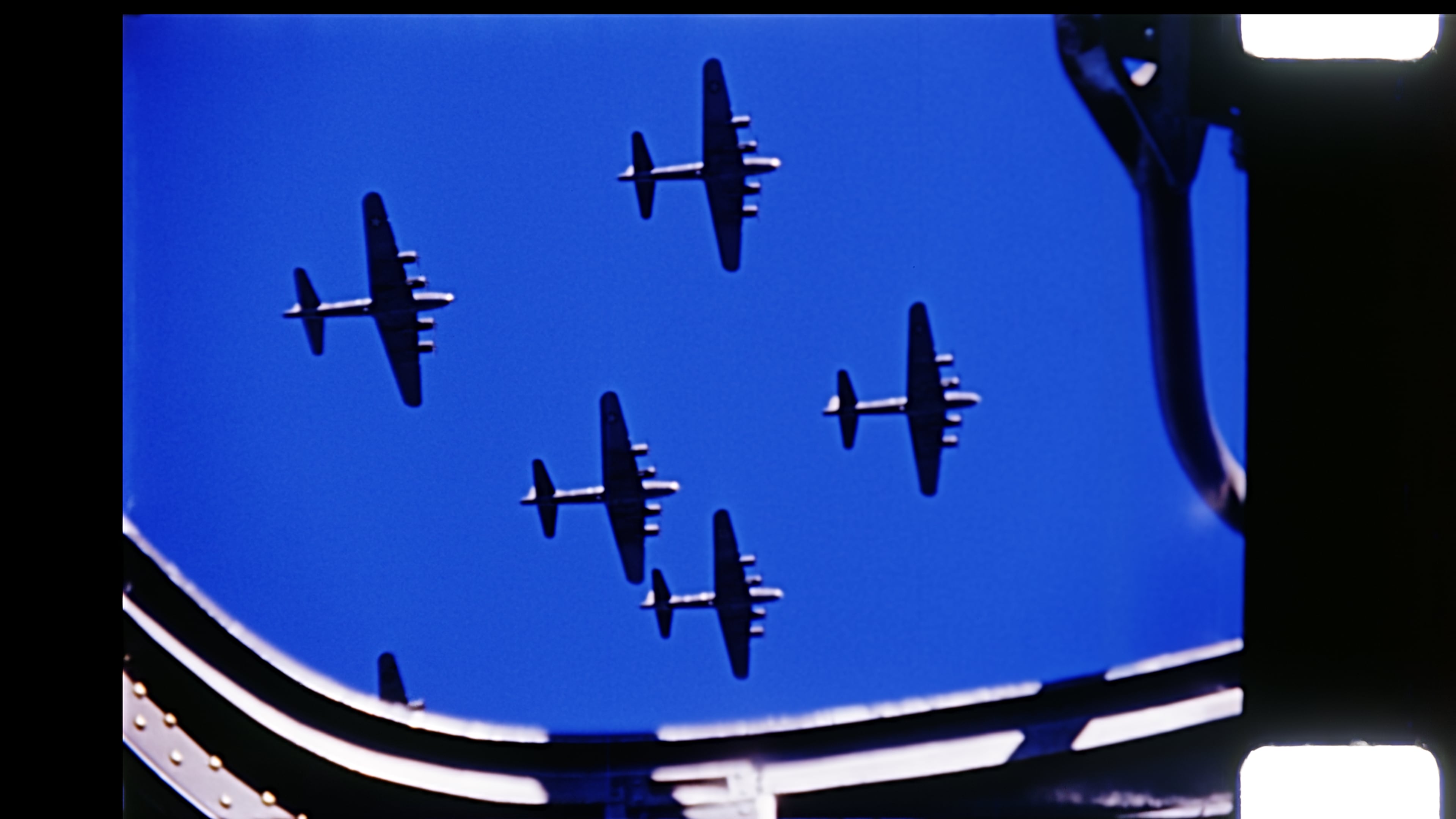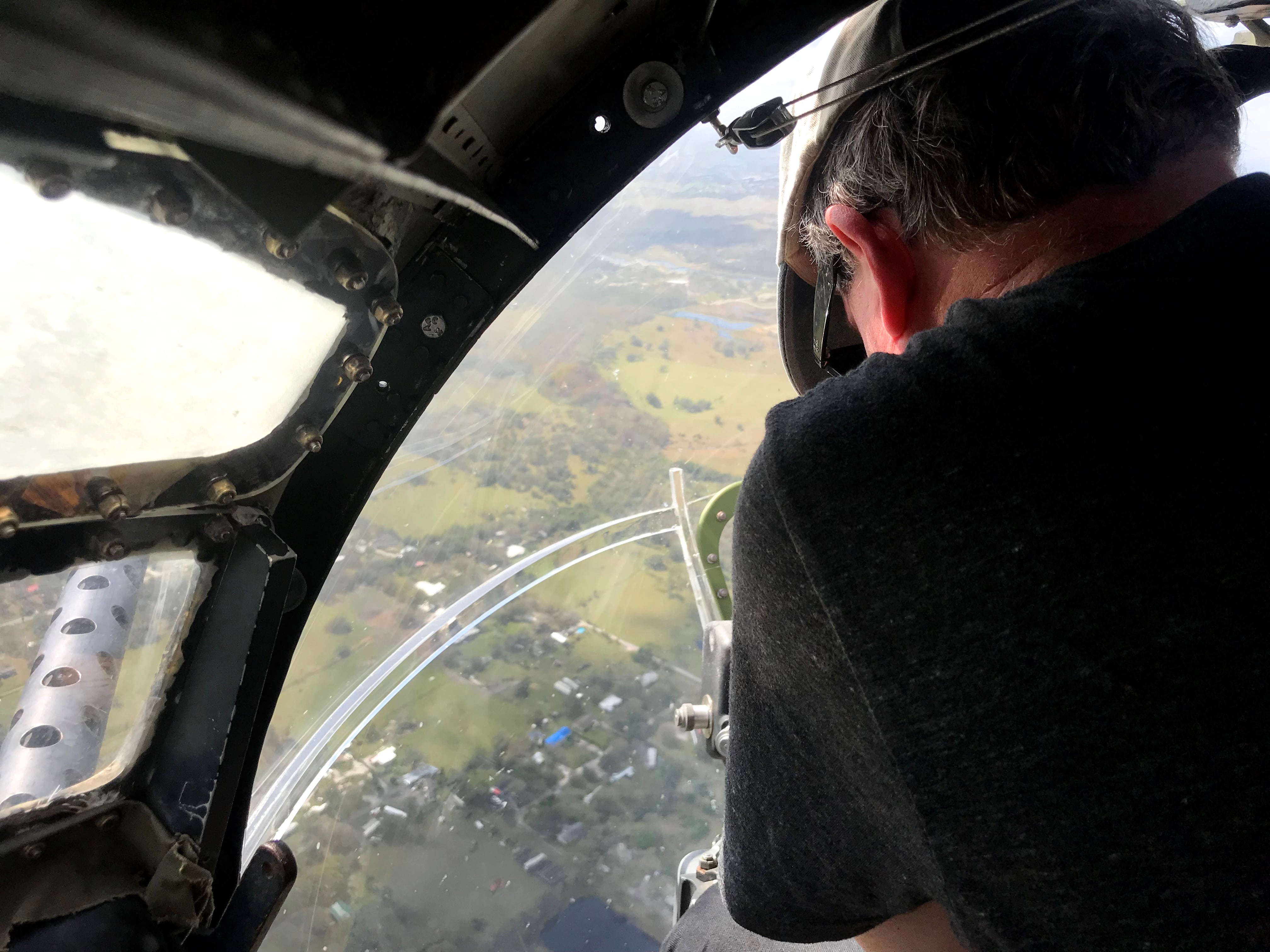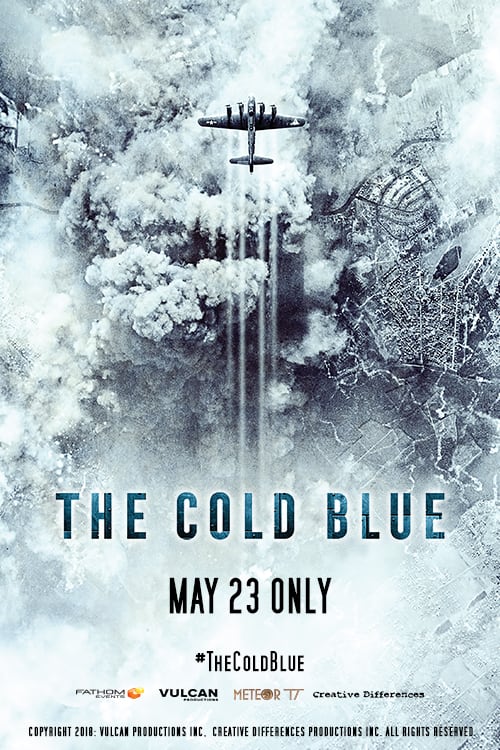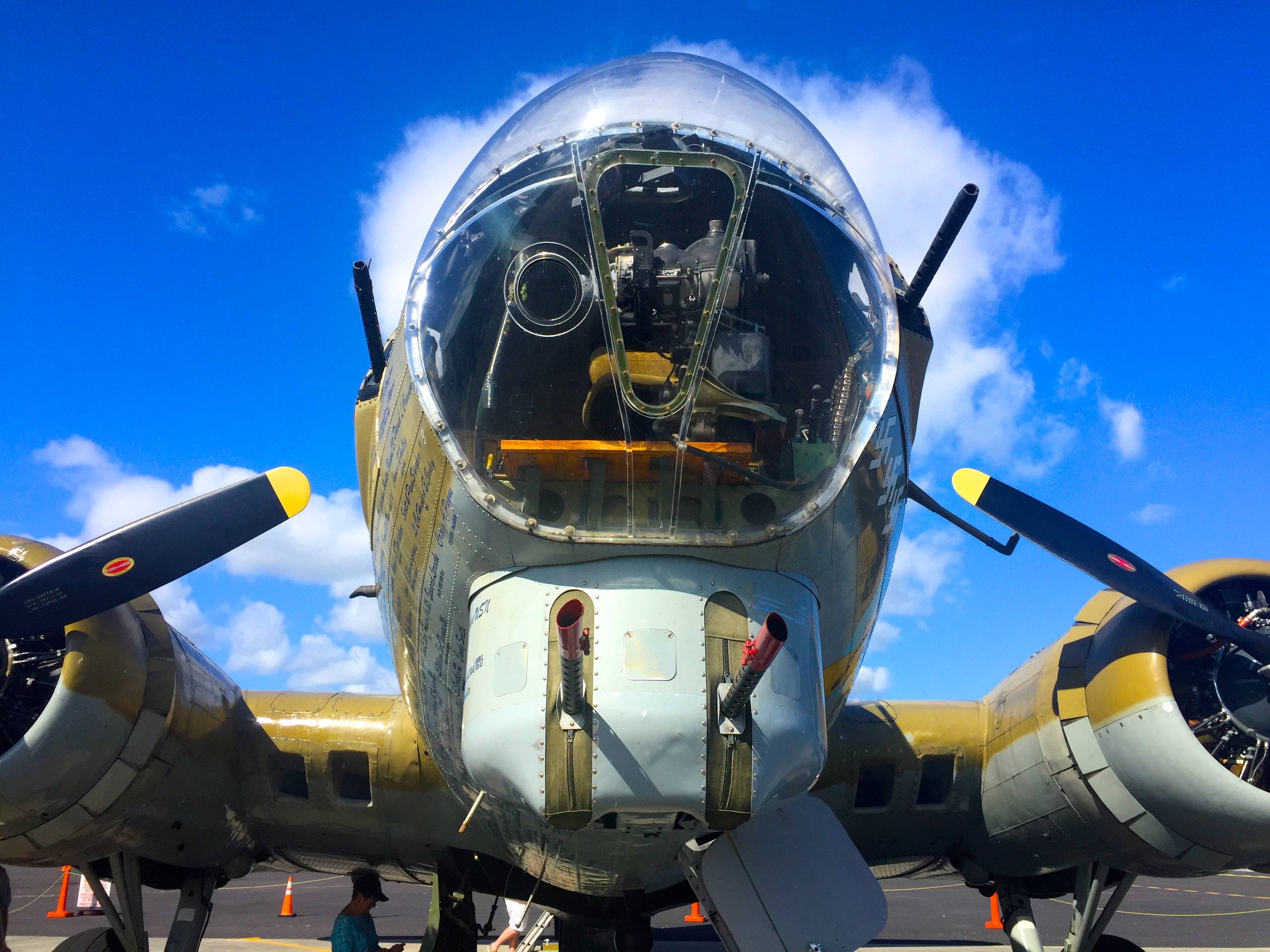Cinematic masterpieces “The Best Years of Our Lives” (1946), “Roman Holiday” (1953) and “Ben-Hur” (1959) may have cemented William Wyler’s legacy as one of Hollywood’s most celebrated filmmakers, but it was a filming experience during 1943 that left the most lasting impression on the Oscar-winning director.
That summer, Wyler and a film crew embedded with the U.S. Eighth Air Force to film air combat missions aboard Boeing B-17s. The footage Wyler’s group captured would eventually become the 1944 World War II documentary “The Memphis Belle: A story of a Flying Fortress.”
Three years (1942-1945) of daylight bombing runs by the Eighth’s Flying Fortresses over Nazi Germany unleashed 697,000 tons of bombs.
But the effort to pry the claws of the Third Reich from Europe was met with deadly resistance, prompting torturous contemplation of one’s own mortality while being confronted with casualty totals that, by war’s end, would exceed 115,000 personnel from the U.S. Army Air Force.
Of that total, over 47,000 of were from the Eighth.
Despite these devastating odds, men from the “Mighty Eighth” again and again climbed into cockpits and bombardier enclosures and took to the sky.

And Wyler’s camera crew kept rolling, even when one of its own, Harold Tannenbaum, was killed filming one such bombing mission.
It wouldn’t take long, however, for Wyler’s “Memphis Belle” to be overshadowed by his other triumphs, and in the process, the rolls of film compiled by his crew would be stashed away in the National Archives like a history buff’s buried treasure.
There the film sat, collecting dust, until director Erik Nelson resurrected the footage for his new documentary, “The Cold Blue,” a film dedicated to the heroic actions of the men of the “Mighty Eighth” who faced almost certain death on a daily basis.
Nelson (“A Gray State,” “Grizzly Man”), who received backing from the late Paul Allen’s Vulcan Productions, discussed the significance of the film restoration project with Military Times and HistoryNet.
“The Cold Blue” debuted June 6, the 75th anniversary of D-Day, on HBO.
Walk us through the intricate film restoration process — was it at all similar to Peter Jackson’s World War I footage restoration for “They Shall Not Grow Old”?
No, it could not have been more different. The World War I project was in essence an animated film over distinct footage. The color was put in, extra frames were added, so in some ways it was almost rotoscoping, using the film but then recreating it as full-color animation. It was staggeringly ambitious and well-executed.
In “The Cold Blue,” what you see on the screen is what you got on the film. The color was already there, the film was already there. We didn’t have to extrapolate what the colors were because they were there. But we did have to repair the film.
The interesting story is that Wyler and his guys risked — and in one case, lost — their lives gathering this footage before it was shipped back to the United States. In 1943, Wyler was screening it in London and inflicted scratches on the raw master footage. If you look at the “Memphis Belle,” you’ll see what we call “the blue lines of death.” There are two scratches in the original negative that have accompanied this footage for 75 years. The one thing we did as far as a restorer was to remove those blue scratches frame by frame digitally, so we’ve rectified a mistake that I’m sure drove Wyler out of his mind.
What was it that drew you to the story of the Eighth Air Force?
I am something of an autodidact historian on World War II and always have been, so the story of the Memphis Belle was not unknown to me. But the actual film “The Memphis Belle” is in horrible shape. If you go to YouTube and go to the best available National Archives film, or you watch “Five Came Back,” where they talked about the Memphis Belle on Netflix, you’ll see the blue scratches, you’ll see the washed-out muddy color — it all looks orange.
It was a tragedy to me that it had faded so badly, so when we discovered all the raw footage that went into it, and we embarked on “The Cold Blue” project, in the back of my mind was, well, maybe we could restore the “Memphis Belle,” too — and we did.

That kind of bonded us with the Wyler family, because that was their issue — and we got both projects out the door in time for the actual Memphis Belle that was unveiled at Wright-Patterson Air Force Base last May.
We had to rush to get “The Cold Blue” out because we wanted the [veterans] who were in the movie to see the film while they were around to see it. I’m happy to say that every one of the nine gentlemen we interviewed, the nine heroes, every single one of them is still with us today.
You mentioned bonding with the Wyler family. What did it mean to have William Wyler’s daughter, Catherine, noting how delighted her dad would have been with the result? Wyler is a demigod of film … how valuable was getting that approval and input?
It’s immensely gratifying that they’ve endorsed the vision and endorsed the film. I would often discuss with Catherine, “What would your father have thought?” And she would say, and has said, that he would have been thrilled.
I think the idea that the footage Wyler risked his life to make would be resurrected 75 years later, restored, put into wide-screen, and have sound effects supplied in surround sound by the designer who did the blockbuster “Black Panther” would ... I like to think that would have thrilled William Wyler.
That’s one of the reasons why we also restored the “Memphis Belle” — we wanted to create a level playing field. It wouldn’t have been fair for me to put “The Cold Blue” out with this diminished, crappy copy of “The Memphis Belle” in existence. Now people can enjoy “The Cold Blue” and “The Memphis Belle” as well — if someone wants to see the original that remains in three-by-four. And we did just create a 5.1 soundtrack for it, using the original soundtrack but just making it sound way better.
Those are giant shoes to try to fill. So that was in the back of my mind, you know, whether this film will live up to it.
On the sentimentality note, Paul Allen’s Vulcan Productions had a significant role in the production process. Can you discuss what his company did for this project?
Paul Allen was a World War II nut, another armchair, autodidact historian. Except, his resources were somewhat better than mine. (Laughs)
Vulcan basically funded the original research, and then when I stumbled on the Memphis Belle material, I came back to them and said, “I want to make a full film.” “The Cold Blue” concept crystallized fairly quickly.
Then, they co-funded the project with me, so we were funding partners with the project. Paul fortunately got to see the film before he passed away.
Historians argue that late-war carpet bombing was an attempt by the U.S. Army Air Force to justify existing as a separate military branch. In the film, you mention that 28,000 lives were lost in this process. Do the ends justify the means?
Well, we won, didn’t we? I would say that when you’ve assembled a force like that, you’re going to use it, and yes, by February or March, around the time of Dresden, we were pretty much just making a rubble bounce. But once the dogs of war are unleashed, it’s tough to get them back in the kennel. I’m sure there were a lot of agendas at the time, and one can’t isolate any single one of them.
Why was it important for you to tell this story?
These are the last of the best. In some ways I made it for them. We screened the film to the Eighth Air Force reunion in Dayton last year, and I wanted them to see that their story is still being told, and I want to tell the story in a way that this really would impact young 20-year-olds today.
These guys were 19, 20, and 21, and they’re flying B-17s on these ridiculously complicated, hazardous missions. The idea that they’d be in these planes for 10 hours, round-trip, in temperatures equaling Mount Everest, with this sort of crude technology to drop bombs, and they’d head back and wake up and do it all over again ... people just can’t imagine now. War has become more sanitized.

I’ve never seen anything on the Eighth Air Force or on the strategic bombing exercises quite like “The Cold Blue,” because it’s less about “On this date they did this, and then they did this, and then they came back did this.” It’s much more about what it was like. What did it feel like? I was very clear when I was interviewing the guys not to talk about the details of their missions in mission terms, but the experience. I knew what I wanted out of them, and I knew what footage I had to illustrate what they were saying.
They hadn’t really been asked questions like that before. Nobody would say, “How cold was it? Tell me stories about how cold,” or, “What did flak sound like? Tell me what it sounded like in the plane.” Those aren’t the kind of questions they were used to being asked.
We were really trying to resurrect not only the footage but resurrect their stories as a legacy for future generations. And the fact that the guys are still with us to see their movie hit 750 American screens on the 75th anniversary of D-Day is a tribute to them. And they deserve it. They deserve the attention now and they deserve to be celebrated in a film that I hope endures for the next 75 years.
That was one of the things most appreciated about “Dunkirk” — that it felt more like an experience than an actual story. In terms of bringing that experience to life, was there anything you were unable to include that you were hoping could enhance that?
It’s very gratifying that this film made you think of “Dunkirk,” because “Dunkirk” was a big inspiration. My argument at the time was, “This is better than ‘Dunkirk’ because this is real.” But the care and precision of sound design was absolutely influenced by “Dunkirk.” We’re happy that Fathom is putting it in theaters because you need to see it in the dark with the sound up.
As far as things that I wished I could have put in; ironically, the only thing I wished I could have put in was more kickass B-17s being shot down footage. But Wyler didn’t get it. He got two death spirals and some fighters. But in the course of doing the Fathom film, we stumbled on Nazi newsreels, which show what it looked like from the other side — in some ways even better than “The Cold Blue” does.
We’re now exploring other things. My next film is going to be based in the Bundesarchiv. We’re going to basically do a film that tells the entire story of World War II from the German perspective — only using their newsreels and their narration. It’s called “Their Struggle.”
When you say, “What the hell were the Germans thinking they were doing?” OK. Here it is. This is what they were thinking.
What impression do you hope “The Cold Blue” leaves on its viewers?
We were pretty careful to get it right, and the best way to get it right is to show the imagery and have the guys who were there take us through it.
There’s no editorializing or lead you by the nose story. Hopefully, laymen will watch the movie and say, “Oh my God, I never knew. I should read more. I need to find out more about this.”
If that’s where we lead an audience, I feel we’ve done our job.
J.D. Simkins is the executive editor of Military Times and Defense News, and a Marine Corps veteran of the Iraq War.
Claire Barrett is the Strategic Operations Editor for Sightline Media and a World War II researcher with an unparalleled affinity for Sir Winston Churchill and Michigan football.




